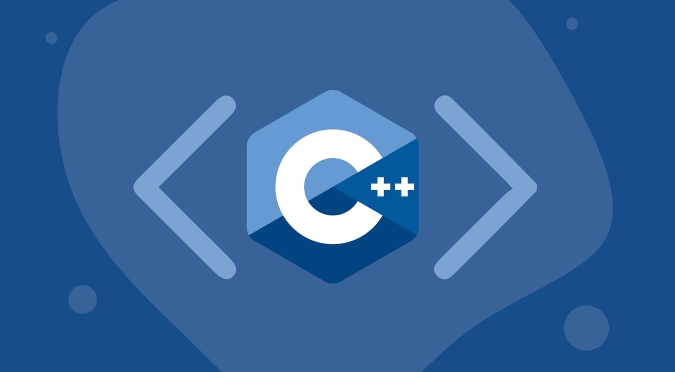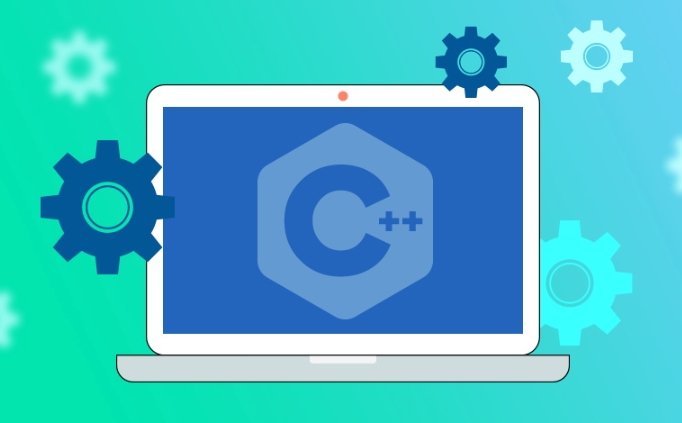Learning C is common and practical to develop games, but it needs to be progressive step by step. 1. First master the basic syntax, such as pointers, memory management, classes and objects, and practice from console mini-games; 2. Select appropriate development tools and environments, such as Visual Studio Unreal Engine or CLion SDL2, solve configuration problems and improve practical capabilities; 3. Practice the mini-game framework and understand the five core steps of the main loop of the game; 4. After getting familiar with it, use mature engines such as Unreal Engine or Cocos2d-x to speed up the development progress, and only by learning and writing code can you truly make progress.

Learning C to do game development is actually quite common. Many mainstream engines use C at the bottom, such as Unreal Engine, and its advantages are good performance and strong control. But if you are just starting out, you may feel a little steep, after all, you have to master the language itself and the game logic at the same time.

The following parts are some practical suggestions I have compiled, suitable for those who are just starting to come into contact with or want to learn systematically.

Learn basic grammar and write the game
Don't rush to start handwriting games, lay a solid foundation for the language first. The syntax of C is much more complex than that of Python or C#. Concepts such as pointers, memory management, classes and objects must be understood clearly.
- It is recommended to start practicing with console games, such as guessing numbers and tic toe chess.
- Don't use too many third-party libraries at the beginning, get used to the native syntax first
- Focus on mastering: reference, namespace, constructor/destructor, inheritance and polymorphism
You can learn and take notes while you are. When you encounter something you don’t understand, check the official documents or Stack Overflow, and you will get familiar with it gradually.

Select the right development tools and environment
C is not just running directly like JavaScript, you need to configure the compiler and development environment. For game development, the following combinations are recommended:
- Visual Studio Unreal Engine (Windows Platform)
- CLion SDL2 or SFML (cross-platform, suitable for learning)
- Xcode Metal/Cocos2d-x (Mac/iOS direction)
The configuration process may encounter various problems, such as misalignment of paths, missing dependencies, etc. Don't rush to skip this time. These problems are common in actual projects. Learning to solve them will be helpful in the future.
Practice a small game framework
Once you have a certain understanding of language, you can try writing a simple game loop. for example:
- Initialization window (can be used with SDL or SFML)
- Handle input events (keyboard, mouse)
- Update the game status (such as character position changes)
- Render the screen
- Control frame rate
These five steps are the core of the game's main loop. You can start by drawing a moving small square, gradually adding collision detection, animation effects, etc.
You don’t have to use the engine from the beginning. Implementing it yourself can help you understand the mechanism behind it more deeply.
Speed ??up progress with ready-made engines
Once you are familiar with the basic process, you can consider using a mature game engine to develop a complete project. Two more commonly used ones are recommended:
- Unreal Engine : Suitable for 3D masterpieces, completely developed in C, and has rich community resources
- Cocos2d-x : lightweight, suitable for 2D games, and also supports C
Both engines have detailed documentation and tutorials, and you can get started step by step by step with the official examples. The key is not to just read but not use it. Only by learning and writing code can you make progress.
Basically that's it. C The threshold for game development is not low, but as long as you take it step by step and insist on writing code, you can slowly make your own works.
The above is the detailed content of C for game development tutorial. For more information, please follow other related articles on the PHP Chinese website!

Hot AI Tools

Undress AI Tool
Undress images for free

Undresser.AI Undress
AI-powered app for creating realistic nude photos

AI Clothes Remover
Online AI tool for removing clothes from photos.

Clothoff.io
AI clothes remover

Video Face Swap
Swap faces in any video effortlessly with our completely free AI face swap tool!

Hot Article

Hot Tools

Notepad++7.3.1
Easy-to-use and free code editor

SublimeText3 Chinese version
Chinese version, very easy to use

Zend Studio 13.0.1
Powerful PHP integrated development environment

Dreamweaver CS6
Visual web development tools

SublimeText3 Mac version
God-level code editing software (SublimeText3)
 Using std::chrono in C
Jul 15, 2025 am 01:30 AM
Using std::chrono in C
Jul 15, 2025 am 01:30 AM
std::chrono is used in C to process time, including obtaining the current time, measuring execution time, operation time point and duration, and formatting analysis time. 1. Use std::chrono::system_clock::now() to obtain the current time, which can be converted into a readable string, but the system clock may not be monotonous; 2. Use std::chrono::steady_clock to measure the execution time to ensure monotony, and convert it into milliseconds, seconds and other units through duration_cast; 3. Time point (time_point) and duration (duration) can be interoperable, but attention should be paid to unit compatibility and clock epoch (epoch)
 How to get a stack trace in C ?
Jul 07, 2025 am 01:41 AM
How to get a stack trace in C ?
Jul 07, 2025 am 01:41 AM
There are mainly the following methods to obtain stack traces in C: 1. Use backtrace and backtrace_symbols functions on Linux platform. By including obtaining the call stack and printing symbol information, the -rdynamic parameter needs to be added when compiling; 2. Use CaptureStackBackTrace function on Windows platform, and you need to link DbgHelp.lib and rely on PDB file to parse the function name; 3. Use third-party libraries such as GoogleBreakpad or Boost.Stacktrace to cross-platform and simplify stack capture operations; 4. In exception handling, combine the above methods to automatically output stack information in catch blocks
 What is a POD (Plain Old Data) type in C ?
Jul 12, 2025 am 02:15 AM
What is a POD (Plain Old Data) type in C ?
Jul 12, 2025 am 02:15 AM
In C, the POD (PlainOldData) type refers to a type with a simple structure and compatible with C language data processing. It needs to meet two conditions: it has ordinary copy semantics, which can be copied by memcpy; it has a standard layout and the memory structure is predictable. Specific requirements include: all non-static members are public, no user-defined constructors or destructors, no virtual functions or base classes, and all non-static members themselves are PODs. For example structPoint{intx;inty;} is POD. Its uses include binary I/O, C interoperability, performance optimization, etc. You can check whether the type is POD through std::is_pod, but it is recommended to use std::is_trivia after C 11.
 How to call Python from C ?
Jul 08, 2025 am 12:40 AM
How to call Python from C ?
Jul 08, 2025 am 12:40 AM
To call Python code in C, you must first initialize the interpreter, and then you can achieve interaction by executing strings, files, or calling specific functions. 1. Initialize the interpreter with Py_Initialize() and close it with Py_Finalize(); 2. Execute string code or PyRun_SimpleFile with PyRun_SimpleFile; 3. Import modules through PyImport_ImportModule, get the function through PyObject_GetAttrString, construct parameters of Py_BuildValue, call the function and process return
 What is function hiding in C ?
Jul 05, 2025 am 01:44 AM
What is function hiding in C ?
Jul 05, 2025 am 01:44 AM
FunctionhidinginC occurswhenaderivedclassdefinesafunctionwiththesamenameasabaseclassfunction,makingthebaseversioninaccessiblethroughthederivedclass.Thishappenswhenthebasefunctionisn’tvirtualorsignaturesdon’tmatchforoverriding,andnousingdeclarationis
 How to pass a function as a parameter in C ?
Jul 12, 2025 am 01:34 AM
How to pass a function as a parameter in C ?
Jul 12, 2025 am 01:34 AM
In C, there are three main ways to pass functions as parameters: using function pointers, std::function and Lambda expressions, and template generics. 1. Function pointers are the most basic method, suitable for simple scenarios or C interface compatible, but poor readability; 2. Std::function combined with Lambda expressions is a recommended method in modern C, supporting a variety of callable objects and being type-safe; 3. Template generic methods are the most flexible, suitable for library code or general logic, but may increase the compilation time and code volume. Lambdas that capture the context must be passed through std::function or template and cannot be converted directly into function pointers.
 What is a null pointer in C ?
Jul 09, 2025 am 02:38 AM
What is a null pointer in C ?
Jul 09, 2025 am 02:38 AM
AnullpointerinC isaspecialvalueindicatingthatapointerdoesnotpointtoanyvalidmemorylocation,anditisusedtosafelymanageandcheckpointersbeforedereferencing.1.BeforeC 11,0orNULLwasused,butnownullptrispreferredforclarityandtypesafety.2.Usingnullpointershe
 How does std::move work in C ?
Jul 07, 2025 am 01:27 AM
How does std::move work in C ?
Jul 07, 2025 am 01:27 AM
std::move does not actually move anything, it just converts the object to an rvalue reference, telling the compiler that the object can be used for a move operation. For example, when string assignment, if the class supports moving semantics, the target object can take over the source object resource without copying. Should be used in scenarios where resources need to be transferred and performance-sensitive, such as returning local objects, inserting containers, or exchanging ownership. However, it should not be abused, because it will degenerate into a copy without a moving structure, and the original object status is not specified after the movement. Appropriate use when passing or returning an object can avoid unnecessary copies, but if the function returns a local variable, RVO optimization may already occur, adding std::move may affect the optimization. Prone to errors include misuse on objects that still need to be used, unnecessary movements, and non-movable types






